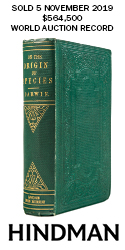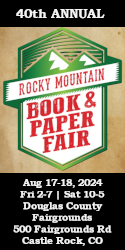The Iron Cage, a Review
(originally published May 2014)
The literature of the Nakba (expulsion and dispossession of the Palestinian people, starting on or about May 15, 1948) is vast. There are many published personal narratives such as Sari Nusseibeh’s Once Upon a Country (NY, Farrar, Straus, 2007) and Karl Sabbagh’s Palestine, A Personal History (NY, Grove Press, 2007), unsparing historical accounts such as expatriate Israeli historian Ilan Pappé’s The Ethnic Cleansing of Palestine (Oxford, OneWorld, 2006), and countless books and essays focusing on various aspects of the struggle. There is even a significant sub-genre of literature relating to the “Israel Lobby” by such writers as ex-Congressman Paul Findley and more recently by academics John Mearsheimer (University of Chicago) and Stephen Walt (Harvard).
With this as a backdrop, it’s refreshing to read a book that places the Palestinian experience within a broader context. Whether discussing the Armenian Genocide, the Holocaust, the Nakba, or the Cambodian Genocide, after a while the public becomes desensitized and wearies of atrocity literature and/or accounts of mass injustice. This is not to say this is as it should be – it’s just the way it is. As in so many things, more is often less.
Rashid Khalidi, historian, essayist, and author of Palestinian Identity… (1997) and Resurrecting Empire… (2004), is a professor of Arab Studies at Columbia and member of various prestigious organizations including the Middle East Institute. One of his more recent books, and the subject of this short review, is entitled The Iron Cage: The Story of the Palestinian Struggle for Statehood (Boston, Beacon Press, 2006).
Khalidi's book gives the reader an overview of urban life in the Palestinian cities of Jaffa, Haifa, and Jerusalem during both the pre- and post -Mandate periods, with considerable attention paid to the most prominent or ‘notable’ (i.e. semi-feudal) families, especially the Nashashibis and the Husaynis – one of the Husaynis was later given the British-invented, post-Ottoman title of Grand Mufti of Palestine, probably as a counter-balance to the influential Nashashibis who had held many of the important secular positions. British colonialism had frequently depended on a divide-and-conquer strategy and by promoting inter-family rivalries among the notables while ignoring practically everyone else, the rural and urban working-class poor felt increasingly marginalized and alienated from what would normally have been thought of as the new post-Mandate Palestinian leadership class. An unfortunate situation which reminds me of the old joke told by Ned Hanaeur many years ago – “The reason the sun never sets on the British Empire is that God doesn’t trust the British in the middle of the night… “ Or words to that effect.
Before the Mandate-period – and even before T.E. Lawrence was bamboozled into enlisting Hussein, the Emir of Mecca (the de facto King of what is now the western part of Saudi Arabia) and his sons Faisal and Abdullah into helping the British defeat the Ottomans, and thereby unwittingly exchanging Turkish overlords for British and French – there was an active Palestinian press. [Even though some Israelis deny the existence of the Palestinians as a people and in some cases refuse to utter the ‘P’ word, a perusal of almost any 19th century (or earlier) atlas will show Palestine on the map. Post WW I names such as Iraq, Saudi Arabia, Jordan, etc., are notably lacking].
‘Isa al-‘Isa was the editor and co-founder of Filastin (Palestine), a newspaper that began publication in 1911 in the coastal city of Jaffa, one of the major Palestinian population centers. Although Filastin was journalistically opposed to modern political Zionism, many of al-‘Isa’s early editorials, indeed the original impetus for his getting into journalism in the first place, was his desire to champion the cause of the Palestinian laity within the Greek Orthodox church. About 11% of Palestinians were Greek Orthodox – there were also Roman Catholics, a smattering of Protestants, an indeterminate number of non-Zionist Jews (Mizrahis and Sephardis) who identified themselves as Palestinians, and a majority of Muslims of various sects — at that time a genuinely multi-religious society. The Greek Patriarch had rejected the Arabic-speaking laity’s wishes to have religious services conducted in the vernacular (presaging the Roman Catholic Church’s Vatican II), which didn’t sit well with Orthodox Palestinians and to make matters worse absentee landlords, including some of the Orthodox hierarchy, were selling large parcels of land to Zionist land purchase agencies often through “blind” sales to innocuous-sounding third parties, leading to the eviction of Palestinian tenants.
Khalidi also makes a compelling case that after the failed 1936-39 revolt against British rule the events of 1948 were almost anti-climactic. And although he doesn’t specifically mention it, while the British were later engaged in the European war they relied heavily on members of the Yishuv (the pre-state Jewish community) to carry on quasi-militarily on their behalf. One of their joint functions was to conduct a census of the Palestinian population, including such information as the number of adult males in each household and whether or not firearms were kept on the premises. This information would prove to be very useful in the pre-dawn raids throughout the early spring of 1948.
As a result, immediately after WW II the Palestinians were disorganized and unprepared civilly or militarily to take on the role of creating a Palestinian state based on the U.N. partition plan or any other plan including that recommended by the 1937 Peel Commission. And Khalidi makes it clear that there was plenty of blame to be shared by all parties involved, including King Abdullah of Transjordan:
Expansion of his power was ‘Abdullah’s idée fixe at this stage, and the idea of doing so westward across the Jordan animated his secret diplomacy with both Britain and the Jewish Agency, with whose leaders he met repeatedly. This meant that ‘Abdullah, Britain, the new state of Israel, and the United States and the Soviet Union, notwithstanding all the many differences between them, in effect shared one objective in Palestine: preventing the establishment of the Palestinian Arab state that had been called for by the partition plan…
Khalidi’s title The Iron Cage refers to the constantly shrinking bits and pieces of real estate upon which fewer observers believe that it is now possible for Palestinians to construct a viable state in the real meaning of that word. Sliced, diced and intersected as it has been since 1967, there is very little contiguous land remaining on the West Bank under nominal Palestinian control. With many of the areas being much smaller than central New York's Onondaga or Oneida Indian reservations, and with Israeli military occupation forces preventing free movement between neighborhoods, villages, or even between parts of Palestinian-owned farms, it may be that a genuine two-state solution has become nearly impossible.
More than forty years of building ‘facts on the ground’ have created the present situation. Since the process of gradual annexation has nearly accomplished its purpose, Khalidi concludes by suggesting or hinting that perhaps it’s time for the international community to recognize that reality and endorse a one-state solution, as long as everyone living within its borders be allowed an equal vote regardless of religious or ethnic background.
… The realities on the ground will drive the Palestinians and the Israelis now living under the unique sovereignty and control of Israel into an entirely new configuration… and what the state of Palestine will be at the end of the process, no one can say. It will certainly not improve if there is a continuing refusal to look honestly at what has happened in this small land over the past century or so, and especially at how repeatedly forcing the Palestinians into an impossible corner, into an iron cage, has brought, and ultimately can bring, no lasting good to anyone. . .
It seems more than passing strange that the United States, the nation with the most potential to act as an honest broker and with the ability to nudge both parties to a fair and just settlement, has for many years done neither. Many observers, and I include myself among them, think that for genuine progress to be made, the United States must recuse itself from future negotiations.
The ghosts of the Mandate period, the Nakba, and subsequent unconstructive American involvement have played no small part in laying the groundwork for the spread of a self-defeating Islamic fanaticism that has extended far beyond the region. Self-defeating in the sense that this fanaticism has accomplished little more than give Islam or any nationalism based on religious identity a bad name. Although I do not know it to be true, I suspect that Khalidi shares this pessimism. These are the real facts on the ground.


























